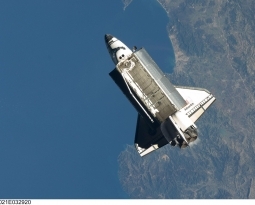Pyka, Inc. Has Secured $37m in Funding for their Electric Autonomous Ag Aircrafts
Pyka Inc. began their journey in 2017 as they set out to develop a new form of aviation – one which is autonomous and electric; fast and environmentally friendly. In recent news, the company has secured $37 million in Series A Funding.
This funding is meant to provide the means for the startup to fast track the production of their Pelican aircraft and ramp up R&D even further.
In a statement, Pyka CEO Michael Norcia said, “We are extremely pleased with this successful raise and the opportunities it affords Pyka to rapidly boost our manufacturing and begin executing on our more than $320 million in MOUs and commercial agreements from customers.”
Back at the start, Pyka was focused on the development of Big Bird, their proof of concept (POC) vehicle. This POC got them accepted into Y Combinator’s summer 2017 batch, and the company spent three months building, testing, and flying Big Bird – a 400 lb unmanned aerial vehicle (UAV). After a successful and fully autonomous mission, the company raised $3 million in funding out of their round at Y Combinator and moved into the design and development of their first full product – the Egret.
With success from the Egret, ,a 200 lb payload 100% autonomous electric crop duster, the company made history as the creators of the first-ever human-scale autonomous electric aircraft certified for commercial work. They used this momentum to launch the development of the Pelican, the second generation electric autonomous agricultural airplane. In 2021, the Pelican took to the skies for the first autonomous fixed wing aerial application on a banana crop – in human history.
The Pelican is a fully autonomous, crop-spraying aircraft with LIDAR-enabled collision and terrain avoidance systems. The aircraft is powered by three electric motors and redundant batteries and it can take off in as little as 450 feet and spray up to 130 acres an hour at a fifth of the operating costs of piloted aircraft. Its payload triples that of its predecessor, the Egret.
This impressive history shows the dedication of the company and the drive behind their R&D. With the influx of this Series A funding, the company intends to further their development to create an ecosystem of technologies including proprietary flight control software, avionics, high power density motors, motor controllers, batteries, and custom carbon-fiber composite airframes.
Are you developing new Technology for an existing application? Did you know your development work could be eligible for the R&D Tax Credit and you can receive up to 14% back on your expenses? Even if your development isn’t successful your work may still qualify for R&D credits (i.e. you don’t need to have a patent to qualify). To find out more, please contact a Swanson Reed R&D Specialist today or check out our free online eligibility test.
Who We Are:
Swanson Reed is one of the U.S.’ largest Specialist R&D tax advisory firms. We manage all facets of the R&D tax credit program, from claim preparation and audit compliance to claim disputes.
Swanson Reed regularly hosts free webinars and provides free IRS CE and CPE credits for CPAs. For more information please visit us at www.swansonreed.com/webinars or contact your usual Swanson Reed representative.

















